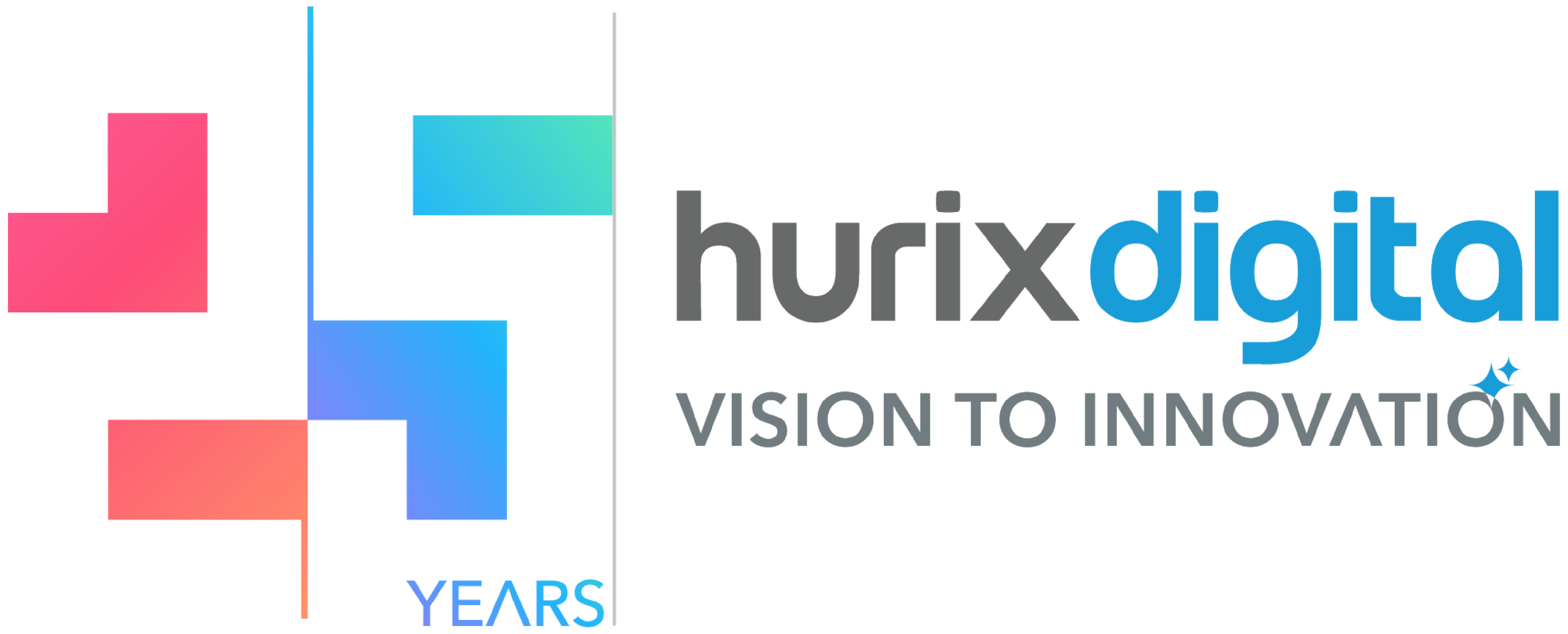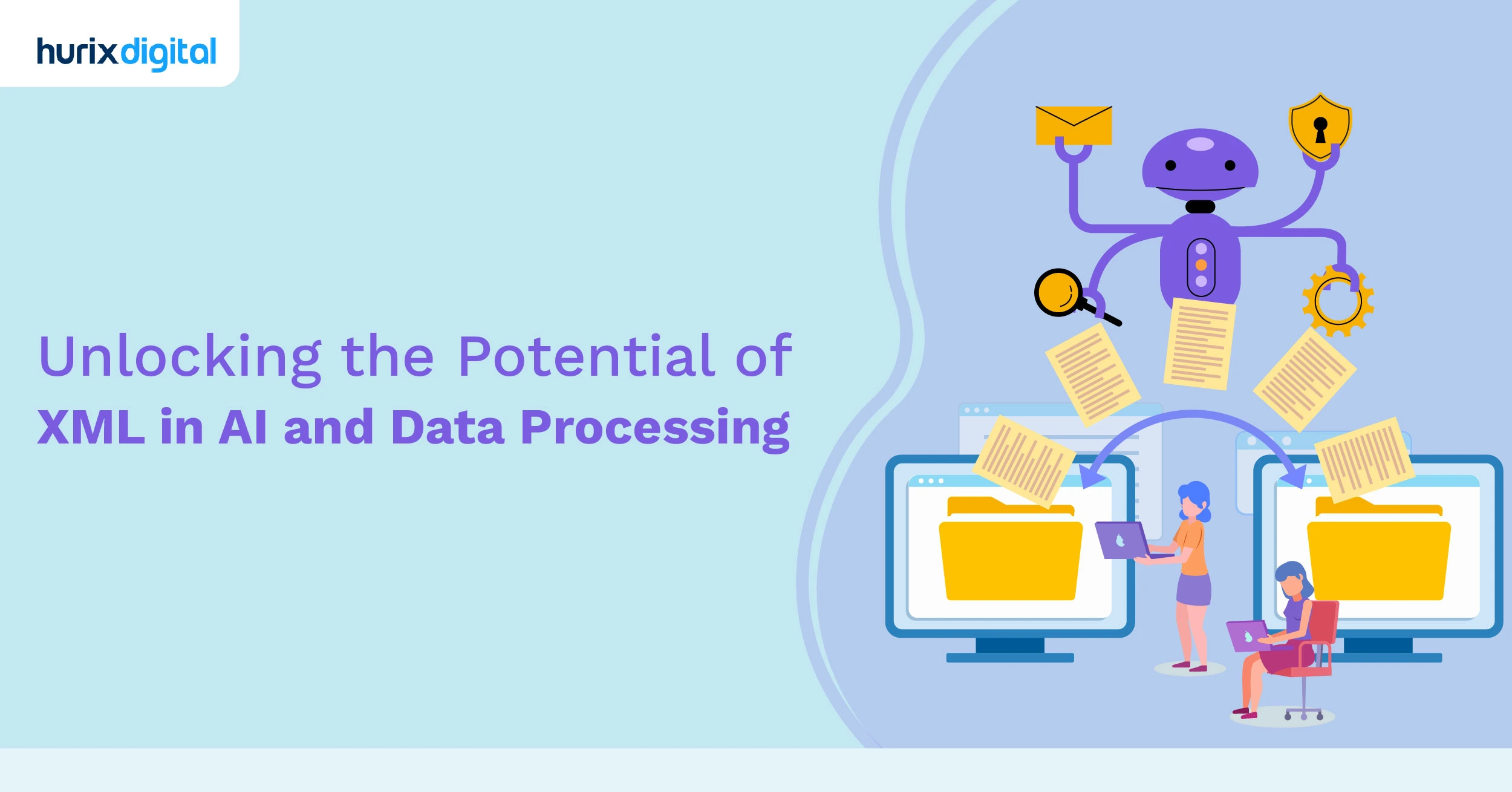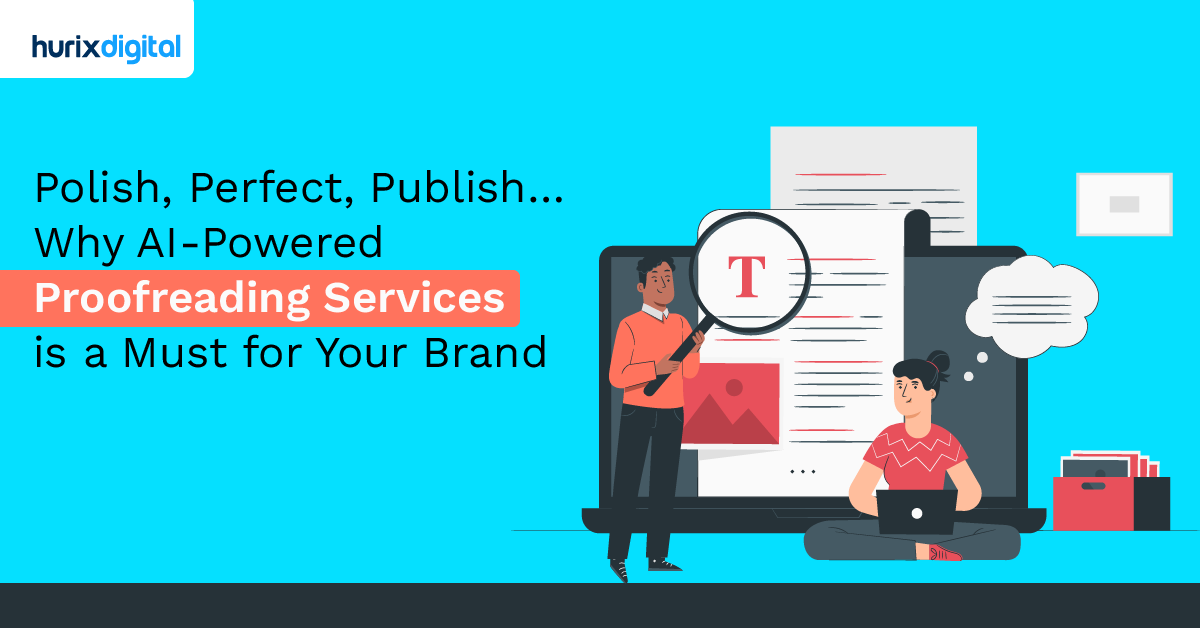
What Makes XML Publishing Essential for Multichannel Content Distribution?
The methodology of copyediting and content development cannot remain static due to the growing demands for quality, speed, and scalability. Most heads of content and chief editors face a similar challenge: maintaining editorial standards while managing vast amounts of structured content, particularly in XML-based publishing workflows.
XML (eXtensible Markup Language) has become foundational in modern content development, serving as the backbone for XML-based publishing systems and XML multichannel publishing strategies. This comprehensive guide examines the evolution from traditional XML content creation to AI-enhanced workflows, offering copyeditors and content developers practical tools and strategies for success.
Table of Contents:
- What is XML in Content Development and Copyediting?
- Four Key Ways XML Contributes to Content Development
- XML’s Role in Modern Publishing
- Traditional XML Creation: The Foundation
- The Rise of AI in XML Content Development
- Essential Tools for Structuring XML Content
- Best Practices for Creating Reusable XML Content
- Traditional vs. AI-Powered XML Creation: A Detailed Comparison Building the Ideal XML Workflow: Combining Human Expertise with AI Power
- Final Thoughts
What is XML in Content Development and Copyediting?
XML is a markup language designed specifically to store and transport data in a structured, machine-readable format. Unlike HTML, which focuses on displaying data, XML emphasizes organizing and describing data, making it invaluable for XML publishing across multiple platforms and formats.
Four Key Ways XML Contributes to Content Development

- Structure and Organization: XML enables content developers to define hierarchical structures for their content, allowing for a clear and organized presentation. Headings, paragraphs, lists, and custom elements all get organized systematically. This creates accessible, machine-readable content that forms the foundation of XML content management systems.
- Content Reusability and Repurposing: Through modular XML content creation, developers can build once and publish everywhere. Content chunks can be easily combined, restructured, and repurposed for ebooks, websites, mobile apps, and print materials.
- Translation and Localization Facilitation: XML separates content from presentation, allowing metadata definitions that streamline translation processes. This enables content to be accessible to global audiences without requiring the underlying data to be restructured.
- Accessibility and Inclusivity: XML’s semantic markup capabilities enable the creation of content designed specifically for accessibility, using proper tagging to identify headings, links, and other elements for assistive technologies.
XML’s Role in Modern Publishing
In web development and digital publishing, XML serves multiple critical functions:
- Web Services: XML defines the structure and format of data exchanged between applications
- RSS Feeds: Publishers use XML to distribute content in standardized formats for news aggregators
- XHTML: XML forms the underlying markup language for structured web content
- Data Storage: Major databases like Microsoft SQL Server and Oracle support XML as a native data type, enabling efficient structured data storage and retrieval
- Data Integration: XML serves as a common format for combining data from multiple sources into unified views
Traditional XML Creation: The Foundation
Traditional XML creation and copyediting is a hands-on, meticulous process led by skilled editors and content developers who work line by line, carefully structuring content with precision. This approach is rooted in a deep, human-driven understanding of context, tone, and audience requirements.
The Traditional XML Transformation Process
Traditional workflows involve manual XML transformation, where editors and content developers:
- Analyze content structure and determine appropriate XML schema
- Hand-code XML tags to mark up content elements
- Validate against DTDs or XML schemas to ensure structural integrity
- Review and refine tagged content for consistency
- Test across publishing platforms to verify proper rendering
This step-by-step content tagging is essential for XML-based publishing systems, ensuring proper content distribution across digital platforms, particularly valuable in academic, scientific, and technical publishing.
Why Traditional Methods Still Matter?
One of the strongest assets of traditional XML creation is its capacity for contextual understanding. Human editors can:
- Interpret nuanced language and apply appropriate semantic markup
- Adapt content structure to fit publication-specific schemas
- Make sophisticated tagging decisions that resonate with end-user needs
- Handle complex nested structures and edge cases
- Ensure brand voice consistency through structural choices
This human touch captures subtlety and precision. Such qualities are especially valuable for complex technical content, legal documents, and creative works requiring sophisticated tagging strategies.
The Trade-Offs
However, traditional XML creation presents challenges:
- Time-Intensive: Manual tagging requires hours of focused attention per document
- Difficult to Scale: High-volume projects demand multiple skilled specialists
- Human Error Risk: Under tight deadlines, even experienced professionals can introduce inconsistencies
- Resource Intensive: Requires ongoing training and specialized expertise
- Cost Implications: Labor-intensive processes increase production costs
While traditional methods excel in producing polished, contextually rich XML content, they often struggle with the speed and scalability that today’s digital publishing ecosystem demands.
The Rise of AI in XML Content Development
AI-powered XML creation tools leverage advanced algorithms, natural language processing (NLP), and machine learning to automate many tasks traditionally performed manually. These tools revolutionize XML publishing workflow efficiency while maintaining quality standards.
How AI Transforms XML Creation
Unlike manual processes requiring line-by-line review, AI-driven tools can:
- Automatically identify document structure and suggest appropriate XML tagging
- Apply consistent markup patterns across thousands of pages
- Detect and correct structural inconsistencies in real-time
- Learn from corrections and improve accuracy over time through machine learning
- Handle repetitive tagging tasks with perfect consistency
AI-powered tools like Jasper, QuillBot, and specialized XML editors excel at processing large volumes of content, analyzing structural patterns, and applying XML schemas at remarkable speed. Machine learning further enhances these capabilities, with systems becoming increasingly precise through continuous use.
Essential Tools for Structuring XML Content
Success in XML content development requires the right technological toolkit. Here are the essential categories and specific tools for effective XML publishing workflow management:
1. XML Editors
Professional XML editors provide comprehensive environments for creating, editing, and validating XML documents:
- XMLSpy (Altova): Industry-leading XML editor with intelligent editing features, schema generation, and validation capabilities
- oXygen XML Editor: Powerful cross-platform editor supporting all XML-related technologies with extensive validation options
- Altova XML Editor: Feature-rich environment with syntax highlighting, auto-completion, and visual schema designers
These editors typically include syntax highlighting, intelligent auto-completion, real-time validation, and built-in transformation capabilities.
2. XML Schema Editors
Schema editors enable definition and management of XML structures, enforcing consistency across content:
- Altova XMLSpy Schema Editor: Visual schema design with automatic documentation generation
- Liquid XML Studio: Comprehensive schema development environment with binding generation
- Stylus Studio: Advanced schema editing with graphical design capabilities
These tools help establish and maintain the structural frameworks essential for XML-based publishing systems.
3. XSLT Processors
XSLT (Extensible Stylesheet Language Transformations) processors transform XML documents into various output formats:
- Saxon: High-performance XSLT and XQuery processor supporting the latest standards
- Xalan: Apache project providing XSLT transformation for Java and C++ environments
These processors enable the multi-format publishing capabilities central to XML multichannel publishing strategies, transforming XML source content into HTML, PDF, EPUB, and other formats.
4. Content Management Systems
XML-capable CMS platforms provide infrastructure for managing structured content:
- Drupal: Open-source CMS with robust XML import/export and content structuring
- WordPress: Widely adopted platform with XML-RPC support and structured content capabilities
- Component Content Management Systems (CCMS): Specialized systems like Author-it, Ixiasoft, and Adobe Experience Manager are designed specifically for XML-based structured content
These systems feature content types, taxonomies, and metadata management that support organized XML content structures at scale.
5. Programming Languages and Libraries
For custom XML workflow development, programming languages offer powerful capabilities:
- Python: lxml, ElementTree, and xml.etree libraries provide comprehensive XML manipulation
- Java: JAXB, DOM, SAX, and StAX parsers enable sophisticated XML processing
- JavaScript: DOMParser and XMLSerializer for browser-based XML handling
These languages enable the creation of custom automation tools, validation scripts, and workflow integrations tailored to specific publishing requirements.
Best Practices for Creating Reusable XML Content

Creating XML content that can be effectively reused and repurposed requires strategic planning and disciplined implementation. Follow these proven practices:
1. Define Clear, Consistent Structures
Establish comprehensive XML schemas or Document Type Definitions (DTDs) that:
- Maintain flexibility for diverse content types
- Enforce consistency across documents
- Accommodate future content requirements
- Support your XML publishing workflow needs
2. Use Meaningful, Descriptive Element Names
Choose element and attribute names that:
- Clearly convey semantic meaning
- Follow consistent naming conventions
- Make content structure self-documenting
- Facilitate understanding across teams and systems
3. Implement Comprehensive Metadata
Apply metadata that describes:
- Content authorship and ownership
- Creation and modification dates
- Intended audience and purpose
- Keywords and taxonomic classifications
- Usage rights and restrictions
4. Leverage Semantic Markup
Use semantic elements that:
- Define relationships between content components
- Add contextual meaning beyond structure
- Enable intelligent content reuse and transformation
- Support accessibility requirements
5. Create Modular Content Components
Break content into logical, self-contained chunks that:
- Function independently or as part of larger assemblies
- Can be combined in multiple configurations
- Support single-source, multi-channel publishing
- Reduce content redundancy and maintenance overhead
6. Separate Content from Presentation
Maintain strict separation by:
- Keeping all formatting and styling in CSS or XSL stylesheets
- Storing only semantic structure and content in XML
- Enabling effortless presentation changes without content modification
- Supporting XML multichannel publishing across diverse platforms
| Feature | Traditional XML Creation | AI-Powered XML Creation |
| Speed & Efficiency | Time-consuming manual tagging and validation. Each document requires careful individual attention, slowing turnaround times significantly. | Extremely fast automated tagging and validation. AI processes large document sets in seconds, dramatically reducing turnaround times. |
| Accuracy | High accuracy when executed by experienced XML specialists, but human errors occur, particularly during repetitive tagging tasks or complex nested structures. | Very accurate for pattern-based tagging, schema application, and consistency checks. May occasionally miss subtle contextual nuances requiring human judgment. |
| Scalability | Difficult to scale efficiently. High-volume projects require multiple trained specialists and remain time-intensive even with team expansion. | Highly scalable by design. AI handles vast content volumes simultaneously, making it ideal for enterprise-scale XML publishing requirements. |
| Cost | Higher costs due to specialized expertise and time requirements. Costs increase proportionally with content volume and complexity. | Cost-effective for high-volume projects. Initial tool investment or subscription pays off quickly through automation of routine tasks. |
| Contextual Understanding | Exceptional adaptability for complex content requiring sophisticated semantic decisions. Specialists adjust to any schema, industry, or content type nuances. | Improving but still limited for highly contextual or creative content. Best for structured, rule-based tagging scenarios. Struggles with ambiguous or novel content structures. |
| XML Schema Compliance | Manual validation against schemas, DTDs, or custom specifications. Requires expert knowledge of schema requirements and validation tools. | Automated validation against defined schemas. Instantly flags non-compliant elements, enforcing structural integrity throughout the XML publishing workflow. |
| Learning Curve | Steep learning curve requiring extensive training in XML technologies, schema languages, and content structuring principles. | Minimal learning curve for basic operations. More sophisticated uses require an understanding of training and customization approaches. |
| Handling Complex Structures | Excel at complex nested structures, edge cases, and non-standard requirements. Human judgment handles ambiguous structural decisions effectively. | Improving with machine learning, but can struggle with highly complex or irregular structures. Best for standard schemas and predictable patterns. |
| Adaptability | Easily adapts to new schemas, industries, or content types with human flexibility and creativity. | Requires retraining or reconfiguration for new schemas or significantly different content types. Adaptation less flexible than human specialists. |
Traditional vs. AI-Powered XML Creation: A Detailed Comparison Building the Ideal XML Workflow: Combining Human Expertise with AI Power
Although AI-powered XML creation offers tremendous advantages, it’s essential to recognize it as a powerful tool rather than a complete replacement for human expertise. AI systems, despite impressive capabilities, sometimes struggle with:
- Contextual Nuances: Subtle meaning, irony, or cultural references
- Complex Decision-Making: Non-standard structural choices requiring judgment
- Creative Tagging: Novel document types without established patterns
- AI “Hallucinations”: Occasional generation of incorrect structural decisions or nonsensical tagging
These limitations require careful human oversight, particularly in quality-critical XML publishing workflows.
The Optimal Workflow Model
The most effective approach combines the strengths of both traditional expertise and AI automation:
AI Handles:
- Initial automated tagging of standard structures
- Consistency checking across large document sets
- Schema validation and compliance verification
- Repetitive pattern application
- Bulk transformation and processing
Human Specialists Focus On:
- Complex structural decisions require judgment
- Quality assurance and edge case handling
- Schema design and customization
- Creative problem-solving for novel content types
- Final validation before publication
This hybrid approach maximizes efficiency while maintaining the quality and sophistication required for professional XML content development and XML multichannel publishing success.
Final Thoughts
XML content creation stands at an exciting intersection of traditional craftsmanship and technological innovation. While AI tools revolutionize efficiency and scalability in XML publishing workflow management, human expertise remains irreplaceable for contextual understanding, creative problem-solving, and quality assurance.
Ready to transform your XML content development workflow? Hurix Digital offers comprehensive AI-powered content transformation services, including XML tagging, structure optimization, and multi-format publishing solutions. Our expert team combines deep XML expertise with cutting-edge AI tools to deliver precision content solutions tailored to your specific requirements.
From legacy content conversion to sophisticated XML multichannel publishing implementations, we handle scanned images, PDFs, Word documents, Excel spreadsheets, and PowerPoint presentations with meticulous attention to detail. Contact our team to discover how we can optimize your XML publishing workflow.

Vice President – Content Transformation at HurixDigital, based in Chennai. With nearly 20 years in digital content, he leads large-scale transformation and accessibility initiatives. A frequent presenter (e.g., London Book Fair 2025), Gokulnath drives AI-powered publishing solutions and inclusive content strategies for global clients
 Upcoming Masterclass | Build an Army of Brand Evangelists using Training & Development | November 20th, 8:30 AM PDT | 11:30 AM EDT | 10:00 PM IST
Upcoming Masterclass | Build an Army of Brand Evangelists using Training & Development | November 20th, 8:30 AM PDT | 11:30 AM EDT | 10:00 PM IST




